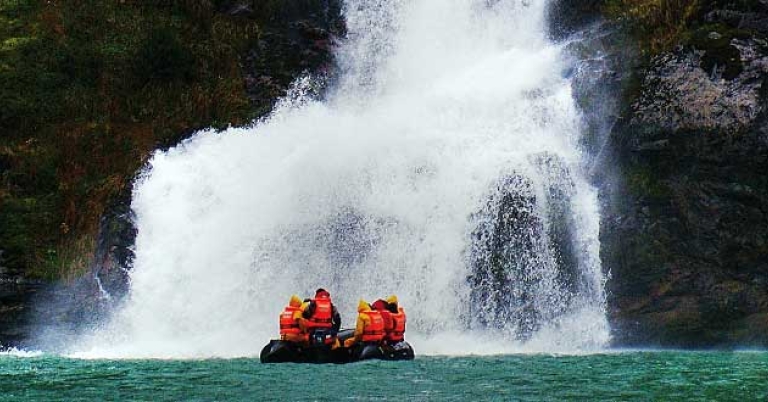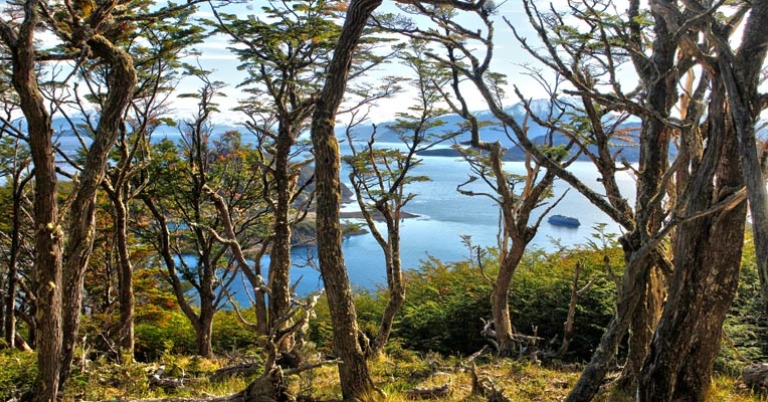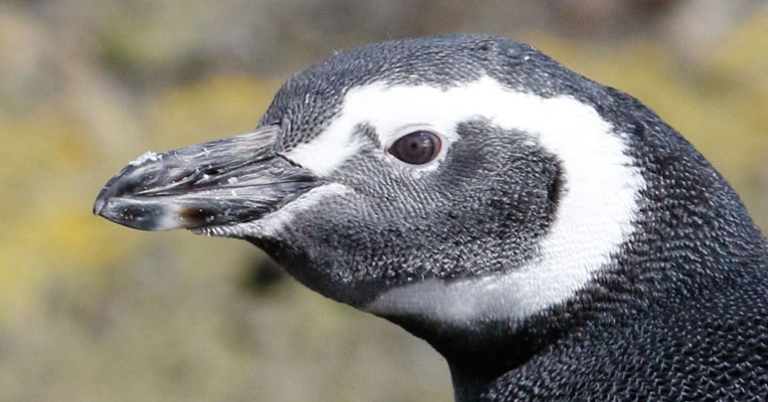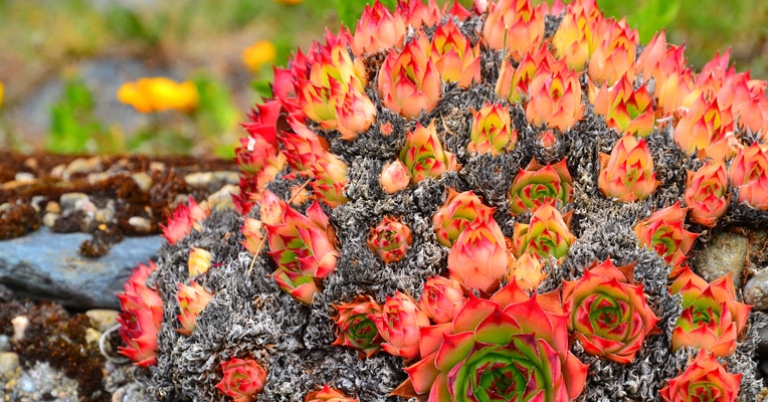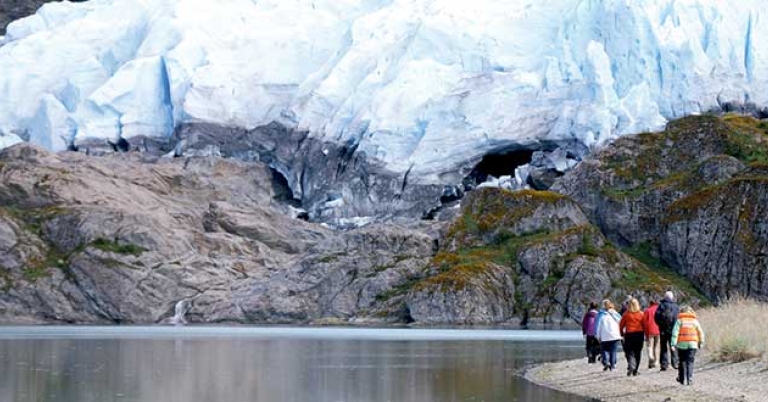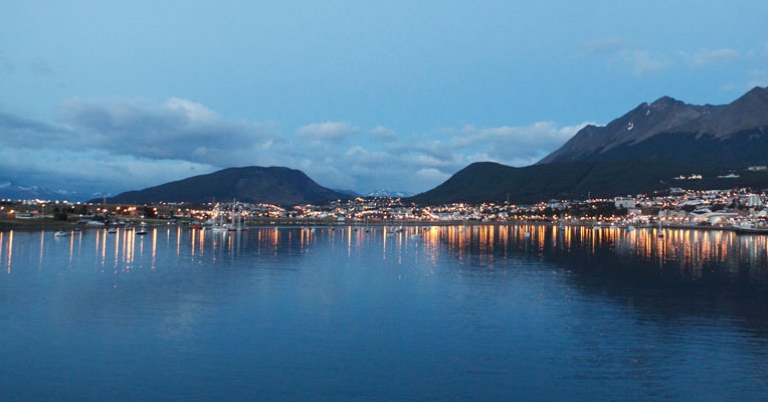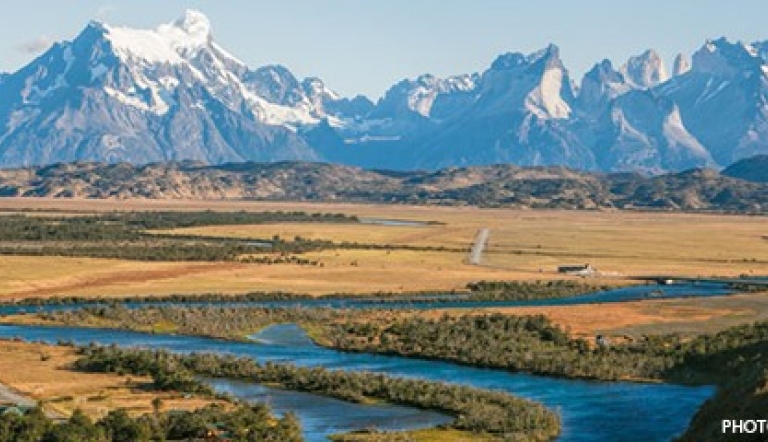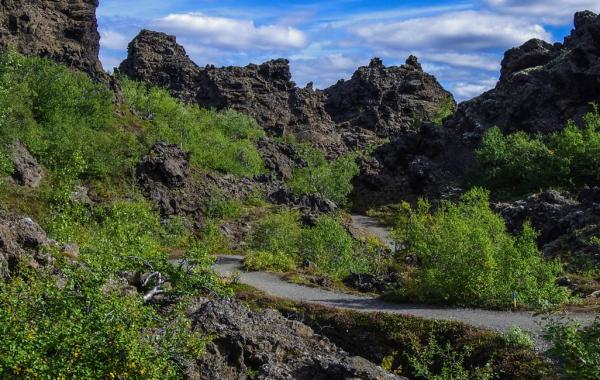Frontiers of Patagonia: Cape Horn, Tierra del Fuego and Beyond
About this trip
Knife-edged Andean peaks, electric-blue fjords, teeming rookeries and vast steppes: Patagonia promises adventure on a grand scale, and you will experience it, by land and sea. Aboard the new, state-of-the-art M/V Ventus Australis, your small group will hug the coast at the bottom of the world, served by a multidisciplinary team who will explain the science and history behind the beauty. Discover the skyscraping splendor of Torres del Paine National Park, the roiling seas of Drake Passage and Cape Horn National Park, sparkling glacial lakes and old ports where whalers and adventurers sailed in the wake of Magellan and Darwin. A Chilean winery in Santiago and a tango show in Buenos Aires add color and contrast to your wilderness adventure.
NOTE: Please ask us about possible discounts for travel during March and October.
Highlights
- Hike the trails at Tierra del Fuego National Park, enjoying breathtaking scenery near the continent’s southernmost tip.
- Cruise in comfort aboard M/V Ventus Australis through the fjords, bays, and open seas from Ushuaia to Punta Arenas.
- Marvel at Torres del Paine’s dramatic lakes, glaciers, and waterfalls, as well as the distinctive granite peaks for which the park is named.
- Experience the sultry tango in Buenos Aires.
- Sample the sophisticated pleasures of Santiago and the Chilean wine country.
- Learn about the native Yámana people and their interactions over the centuries with international missionaries, explorers, and scientists.
- Visit Magdalena Island to view a colony of more than 120,000 Magellanic Penguins.
- Taste Fuegian specialties with a local chef during a private dinner.
$8,195
Land Cost
Group size
Book 10 travelers and 1 group
leader travels for free
What makes us different
Service anytime
Sustainable travel
Custom-tailored trips
Low stress travel planning
Support local communities
Flight arrangements
Daily Itinerary
Print ItineraryDepart
Day 1Buenos Aires
Day 2Buenos Aires
Day 3Ushuaia
Day 4Tierra del Fuego
Day 5Cruising
Day 6Cruising
Day 7Cruising
Day 8Torres del Paine
Day 9Torres del Paine
Day 10Torres del Paine
Day 11Santiago
Day 12Depart
Day 13Arrive
Day 14Pricing
Print Pricing$8,195
Land Cost
Group size
Book 10 travelers and 1 group
leader travels for free
What's Included
- Activities and meals as mentioned in itinerary
- Carbon Offset
- Local guide during tours only
What's Not Included
- International airfare
- Tips
- Trip cancellation coverage
Pricing Details
Prices are valid for travel from Jan 1, 2025 - Dec 15, 2027. Holiday surcharges may apply.
Travel Info
Print Travel InfoActivity Level 3: Moderate
This multifaceted adventure combines natural exploration by land and sea, with urban discovery in two iconic South American capitals. The 5-day expedition cruise portion of your journey brings you to Patagonian fjords, inlets, islands and shores for daily hikes, often with varying options for level of challenge. You’ll hike flat forest paths, sandy and rocky beaches, and more intense trails through rugged glacial landscapes. Onboard your comfortable expedition ship you can expect mainly smooth sailing, but in Cape Horn National Park there can be high winds and rough seas. Many excursions use Zodiac landing craft. Other activities include visits to a penguin colony and a winery, and touring in Buenos Aires. The highest altitudes are less than 3,600 feet, in Torres del Paine National Park. Patagonia is generally cool, with average daily highs between 43˚–72˚F, depending on season. Summer (December–March) is the best time to travel. There are two internal flights plus overland transfers in private motorcoaches.
Entry & Exit Requirements
U.S. and Canadian citizens must have a valid passport to enter Argentina and Chile. Passports must be valid for at least the duration of your stay. (As requirements are subject to change at any time without notice, we strongly recommend at least six months' validity.)
Neither country requires a visa for visits up to 90 days.
You must present proof of mandatory travel medical insurance for entry into Argentina. Your travel insurance policy must be valid for the full duration of your trip and include coverage for medical and hospital care, accidents or illnesses (including COVID-19), 24/7 emergency assistance, and medical evacuation and repatriation.
A tourist card is required for U.S. citizens entering Chile and is issued upon arrival. This card allows visitors to stay for up to 90 days and will allow multiple entries. Keep the tourist card with your passport; it is important not to lose it, as you must present the card to Customs when you leave the country.
If you are not traveling with a U.S. passport, please check with the Argentine and Chilean embassies for the requirements based on your nationality.
Health Information
IMMUNIZATIONS
The Centers for Disease Control recommends that all travelers be up to date on routine vaccinations such as measles-mumps-rubella (MMR) vaccine, diphtheria-pertussis-tetanus vaccine, varicella (chicken pox) vaccine, and your yearly flu shot before every trip.
There are no vaccinations required for entry into Argentina or Chile.
Though not required, the CDC recommends vaccination against hepatitis A, hepatitis B, and typhoid for most travelers to Argentina and Chile.
Please consult your physician for additional information and recommendations based on your individual circumstances.
SEA SICKNESS
If you’re prone to feeling queasy, we suggest you consult your physician for advice on the best ways to prevent motion sickness. We recommend that you avoid showering when the boat is in motion and remain cautious of activities while passing through rocky waters.
SUN EXPOSURE
The effects of the sun can be damaging to the eyes and skin. Spending time outdoors exposes you to the sun’s harmful ultraviolet (UV) rays, even on cloudy days. To protect yourself from the sun, use a broad spectrum sunscreen of at least SPF 15, protect skin with clothing, wear a wide-brimmed hat and sunglasses, and drink plenty of fluids.
Resources
Print ResourcesPacking Recommendations
Everyone has personal preferences when it comes to packing; for this reason, the information below is offered as a general guide and not a definitive list. You know yourself best: Use your discretion and pack what you think will serve you, based on your personal preferences and specific itinerary.
You may find many of the items below in the New Headings Gear Store. Use code HolbrookGuest10 for a 10% discount on your purchase.
CLOTHING
Casual, comfortable clothing is suitable for most activities. You may wish to bring a slightly nicer outfit or two for dinners out or more formal activities. Keep in mind that locals tend to dress conservatively.
Bring enough clothing suitable for the length of your program. If you prefer to pack light, note that many hotels offer laundry services at an additional cost. Pack clothing that can be worn in layers to adapt to weather changes throughout the day.
- Jackets: Pack clothing that can be worn in layers and include a polar fiber or down jacket as well as a pair of gloves. A sweater, vest, and down jacket may be needed for cool nights or at higher elevations.
- Shirts: Several short- and long-sleeved T-shirts to layer under a sweatshirt and jacket as needed
- Shorts: Patagonia has cool weather year-round, but you may wish to pack a pair of shorts in case of a warm spell during the summer months (December– March).
- Light- and mediumweight long pants, trousers, jeans, or khakis
- Underclothing, socks, and sleepwear: Bring some thin, synthetic socks (liner socks), heavy woolen socks, and a few pairs of thermal underwear (polypropylene or silk) for the hikes. Underwear, socks, and nightwear should be lightweight and designed to dry quickly. You may wish to pack a fleece top and pants to sleep in.
- Headgear: Include a hat (preferably with a wide brim) for sun protection. A tie under the chin is helpful in case of windy conditions. Beanie hats are excellent for windy conditions.
- Bathing suit: Pools are available at some hotels.
- Shoes: You’ll likely want at least one pair of comfortable, closed-toe walking or hiking shoes or boots suitable for outdoor hikes and walking over cobblestones or other uneven terrain. In addition, many participants opt for a pair of sturdy sport-strap sandals (e.g. Keens, Tevas, or similar) and/or casual flip-flops or sandals for around your accommodations.
- Rain gear: A pair of rain pants and jacket with full side zips (Gore-Tex shell or similar for both) or a long, hooded rain poncho to cover you and your gear
- Bandana, scarf, or neck gaiter
PERSONAL TOILETRIES
Pack toiletries based on your personal preferences and habits. Below are just a few recommendations to keep in mind.
- Shampoo, conditioner, lotion, deodorant/antiperspirant , etc.
- Soap and washcloth or a small, quick-drying microfiber towel – Washcloths are not standard in all hotels. If you normally use a washcloth, you may wish to bring one from home.
- Hairbrush, comb, hair ties, shower cap. Most—but not all—hotel rooms provide a hair dryer, but you may wish to bring one from home.
- Toothbrush and toothpaste
- Razor
- Ear plugs, especially if you are a light sleeper
- Personal hygiene products
- Insect repellent
- Sunscreen and lip balm with SPF
- Aloe vera gel
- A travel pack of tissues – also useful as napkins or toilet paper if needed
In addition to your personal toiletries, it is useful to pack a small medical kit, which you can easily prepare. Helpful items might include: bandages, antihistamine, a pain reliever, motion sickness and/or altitude sickness medication (if you are prone to either), anti-diarrhea medicine, individually wrapped pre-moistened towelettes and/or hand sanitizer, antibiotic ointment, anti-fungal cream, moleskin for blisters, eye drops, tweezers, a mini sewing kit, and an extra pair of disposable contact lenses or eyeglasses if you wear them.
Miscellaneous
Remember to pack valuables such as your passport, cash/credit cards, and medications in your carry-on luggage.
- Passport and photocopies of all travel documentation
- Personal insurance card and travel insurance information
- Money – ATM/credit card, traveler's checks, and/or cash; small bills in good condition are recommended
- Prescription medicines (if applicable), with a copy of the prescription
- Sunglasses with strap
- Small day pack for hikes and excursions
- Flashlight and/or head lamp
- A pocket calculator or phone to assist with conversions and currency exchange
- Binoculars with lens cleaner
- Camera and related equipment, such as charger, lenses, and extra memory cards
- Reusable water bottle
- Non-perishable snacks
- Pocket-knife or multipurpose tool - Pack in your checked luggage
- Zip-top style bags – useful for packing toiletries, sorting clothing, storing damp or muddy shoes, or as a dry bag for protecting electronics)
- Notepad or travel journal and pen
- Music or reading material for down time, long bus drives, or on the airplane, and a portable bright light to read by
- Collapsible walking stick or trekking poles with rubber tip
- A small quantity of laundry detergent if you’ll be washing clothing by hand
- Travel-size umbrella – Some people find this unwieldy to carry, while others find it offers better protection than a rain jacket alone.
- Money belt
- Plug adapter and voltage converter for electronics
- Chargers for electronics

Questions
For more information, contact us at 800-451-7111 or email travel@holbrooktravel.com.
